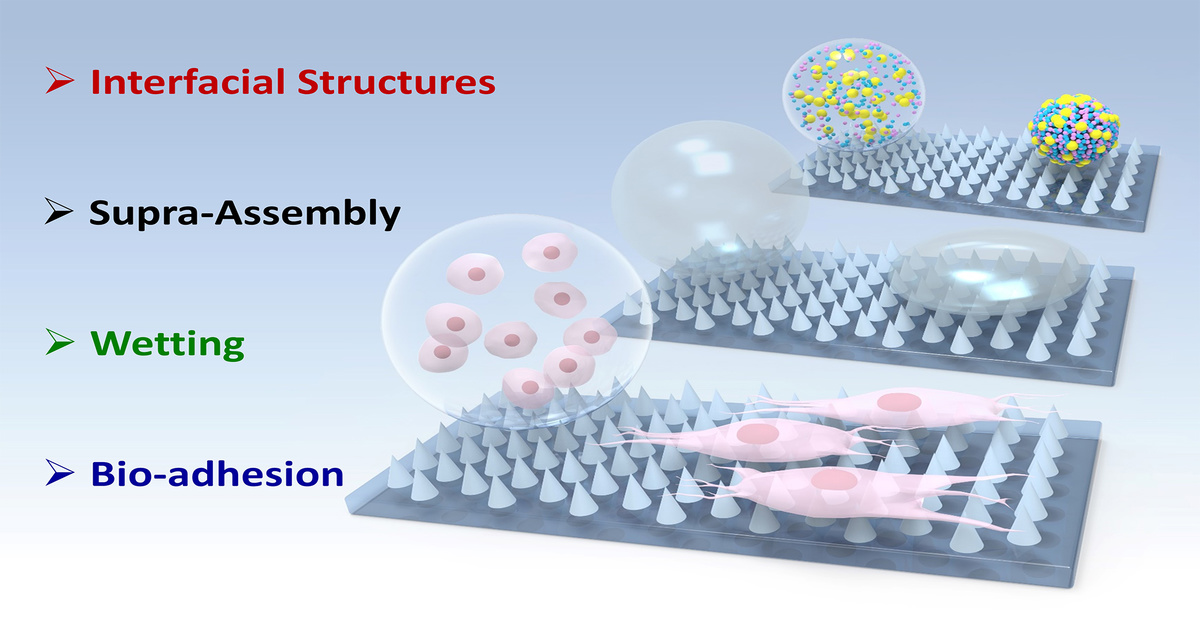Interfacial Structure-Mediated Controllable Adhesion and Assembly
A special issue of Processes (ISSN 2227-9717). This special issue belongs to the section "Materials Processes".
Deadline for manuscript submissions: closed (15 July 2025) | Viewed by 18135

Special Issue Editors
Interests: controllable adhesion; supraparticles; microfabrication; self-assembly; surface engineering; functional materials
Special Issue Information
Dear Colleagues,
Interface science has changed significantly and played an essential role in controllable adhesion and assembly over the past decade. This is mainly due to the development of controllable synthesis methods and microfabrication techniques, such as microstructure-integrated implants that demonstrate a bioadhesive surface which is beneficial for biocompatibility, and superhydrophobic materials that repel water and be applied on windows for self-cleaning. The existence of interfacial structures can provide necessary surface roughness, a large number of reactive sites, specific paths for mass transportation, etc., playing an essential role in achieving adhesion properties and helping us to proceed with the assembly process. Therefore, it has become important for researchers to investigate the relationship between the micro/nanostructures and the adhesion properties and assembly processes. The development of interfacial structure-mediated controllable adhesion and assembly also allowed us to explore the chemical, physical, and biological phenomena that occur at the microscopic and mesoscopic scale and significantly accelerated the integration of different disciplines.
This Special Issue on " Interfacial Structure-Mediated Controllable Adhesion and Assembly" aims to provide a detailed understanding of the current status and prospects of this field. It includes, but is not limited to, the following aspects:
- Development of novel interfacial structure manufacturing approaches;
- Surfaces with controllable wettabilities, including liquid-repellent surfaces;
- Adhesive, bioadhesive, and anti-bioadhesion materials;
- Interface-mediated supramolecular assembly;
- Supraparticle fabrication mediated by interfaces or surfaces.
I am pleased to invite you to submit a manuscript to this Special Issue, where we welcome original research papers and reviews on topical areas.
Dr. Wendong Liu
Dr. Siyuan Xiang
Guest Editors
Manuscript Submission Information
Manuscripts should be submitted online at www.mdpi.com by registering and logging in to this website. Once you are registered, click here to go to the submission form. Manuscripts can be submitted until the deadline. All submissions that pass pre-check are peer-reviewed. Accepted papers will be published continuously in the journal (as soon as accepted) and will be listed together on the special issue website. Research articles, review articles as well as short communications are invited. For planned papers, a title and short abstract (about 250 words) can be sent to the Editorial Office for assessment.
Submitted manuscripts should not have been published previously, nor be under consideration for publication elsewhere (except conference proceedings papers). All manuscripts are thoroughly refereed through a single-blind peer-review process. A guide for authors and other relevant information for submission of manuscripts is available on the Instructions for Authors page. Processes is an international peer-reviewed open access monthly journal published by MDPI.
Please visit the Instructions for Authors page before submitting a manuscript. The Article Processing Charge (APC) for publication in this open access journal is 2400 CHF (Swiss Francs). Submitted papers should be well formatted and use good English. Authors may use MDPI's English editing service prior to publication or during author revisions.
Keywords
- interfaces
- wetting
- micro- or nanofabrication
- controllable adhesion
- self-assembly
- supraparticles
- surface
Benefits of Publishing in a Special Issue
- Ease of navigation: Grouping papers by topic helps scholars navigate broad scope journals more efficiently.
- Greater discoverability: Special Issues support the reach and impact of scientific research. Articles in Special Issues are more discoverable and cited more frequently.
- Expansion of research network: Special Issues facilitate connections among authors, fostering scientific collaborations.
- External promotion: Articles in Special Issues are often promoted through the journal's social media, increasing their visibility.
- Reprint: MDPI Books provides the opportunity to republish successful Special Issues in book format, both online and in print.
Further information on MDPI's Special Issue policies can be found here.






